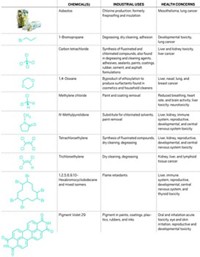Advertisement
Grab your lab coat. Let's get started
Welcome!
Welcome!
Create an account below to get 6 C&EN articles per month, receive newsletters and more - all free.
It seems this is your first time logging in online. Please enter the following information to continue.
As an ACS member you automatically get access to this site. All we need is few more details to create your reading experience.
Not you? Sign in with a different account.
Not you? Sign in with a different account.
ERROR 1
ERROR 1
ERROR 2
ERROR 2
ERROR 2
ERROR 2
ERROR 2
Password and Confirm password must match.
If you have an ACS member number, please enter it here so we can link this account to your membership. (optional)
ERROR 2
ACS values your privacy. By submitting your information, you are gaining access to C&EN and subscribing to our weekly newsletter. We use the information you provide to make your reading experience better, and we will never sell your data to third party members.
Policy
EPA expedites action on five chemicals
Agency moves to reduce exposure to persistent, bioaccumulative, toxic substances under new law
by Britt E. Erickson
October 12, 2016
| A version of this story appeared in
Volume 94, Issue 41
EPA is taking quick action to reduce exposure to five persistent, bioaccumulative, and toxic (PBT) chemicals. Rather than conducting a full risk evaluation for the chemicals, the agency will immediately work to identify where they are used and how to limit the public’s exposure. The move marks the agency’s first major step to control such chemicals as required under the reformed Toxic Substances Control Act (TSCA).
The new TSCA, the Frank R. Lautenberg Chemical Safety for the 21st Century Act, was signed into law in June. It gave EPA sweeping new authorities to control chemicals that people are exposed to everyday. PBT chemicals are known to be some of the worst for the environment and public health.
“The threats from persistent, bioaccumulative, and toxic chemicals are well documented,” says Jim Jones, assistant administrator in EPA’s Office of Chemical Safety & Pollution Prevention. “The new law directs us to expedite action to reduce risks for these chemicals, rather than spending more time evaluating them.”
The following five chemicals will get swift action:
• Decabromodiphenyl ethers (DecaBDE), a flame retardant
• Hexachlorobutadiene (HCBD), found in rubber and lubricants and used as a solvent
• Pentachlorothio-phenol (PCTP), a chemical that softens rubber
• Tris(4-isopropylphenyl) phosphate, a flame retardant
• 2,4,6-Tris(tert-butyl)phenol, a fuel or lubricant additive

Under the new law, EPA is required to take expedited action to reduce exposure to all PBT chemicals that are part of the agency’s 2014 work plan of chemicals for further assessment under TSCA. Alternatively, the agency can conduct full risk evaluations for those chemicals.
Two PBT chemicals used in fragrances—ethanone, 1-(1,2,3,4,5,6,7,8-octahydro-2,3,5,5-tetramethyl-2-naphthalenyl) and ethanone, 1-(1,2,3,4,5,6,7,8-octahydro-2,3,8,8-tetramethyl-2-naphthalenyl)—were not expedited because of industry pushback. Chemical manufacturers asked EPA last month to instead conduct full evaluations for the two substances.
Environmental groups are welcoming EPA’s move, but they are urging the agency to increase the number of PBT chemicals subject to such action. “We fought to have this provision applied to a broader group of chemicals, but the chemical industry resisted,” says Andy Igrejas, director of Safer Chemicals, Healthy Families, a coalition of health, environmental, labor, and business organizations. “Nevertheless, expedited action even against these five chemicals will be a win for public health.”





Join the conversation
Contact the reporter
Submit a Letter to the Editor for publication
Engage with us on Twitter